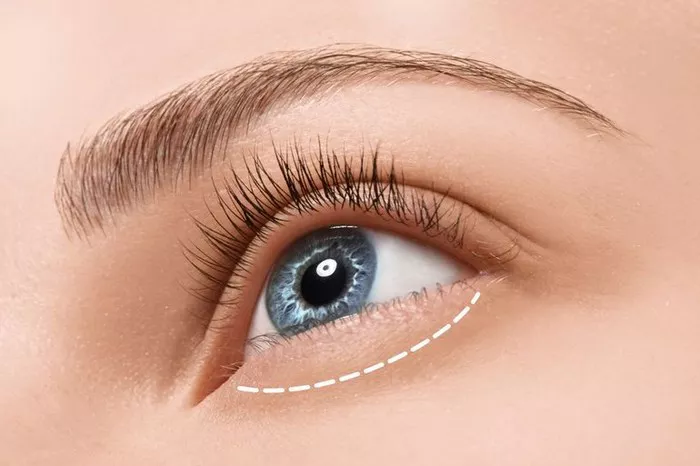Blepharoplasty, commonly known as eyelid surgery, is a cosmetic procedure that can improve the appearance of the eyelids. The procedure involves removing excess skin, fat, and muscle from the upper and/or lower eyelids, resulting in a more youthful and refreshed appearance. In this article, we will explore what blepharoplasty is, what the procedure involves, and what patients can expect in terms of blepharoplasty before and after.
What is Blepharoplasty?
Blepharoplasty is a surgical procedure that is designed to improve the appearance of the eyelids. The procedure can be performed on the upper eyelids, lower eyelids, or both, depending on the patient’s needs and goals.
The procedure involves making incisions in the eyelids and removing excess skin, fat, and muscle. The incisions are then closed with sutures, and the patient is given instructions for post-operative care and recovery.
Blepharoplasty can be performed for both cosmetic and functional reasons. In addition to improving the appearance of the eyelids, the procedure can also correct functional problems such as drooping eyelids that interfere with vision.
Blepharoplasty Before the Procedure
Before undergoing blepharoplasty, patients will have a consultation with a plastic surgeon to discuss their goals and expectations for the procedure. During the consultation, the surgeon will examine the patient’s eyelids and discuss the various options for surgery.
Patients will need to provide a complete medical history and undergo a physical examination to determine if they are good candidates for the procedure. Patients who have certain medical conditions, such as high blood pressure or diabetes, may need to have these conditions under control before undergoing surgery.
Patients will also need to avoid certain medications and supplements in the weeks leading up to the procedure, as these can increase the risk of bleeding and other complications.
The surgeon will take photographs and measurements of the eyelids to help plan the procedure. The surgeon will also discuss the risks and potential complications of the procedure, as well as the expected recovery time.
Blepharoplasty During the Procedure
Blepharoplasty is typically performed on an outpatient basis under local anesthesia with sedation or general anesthesia. The procedure usually takes 1-2 hours to complete, depending on the extent of the surgery.
During the procedure, the surgeon will make incisions in the eyelids and remove excess skin, fat, and muscle. The incisions are then closed with sutures, and the patient is given instructions for post-operative care and recovery.
The surgeon will take care to ensure that the incisions are placed in natural creases and folds of the eyelids to minimize scarring. In some cases, the surgeon may use a laser to perform the procedure, which can result in less bleeding and swelling.
Blepharoplasty After the Procedure
After blepharoplasty, patients can expect some swelling, bruising, and discomfort around the eyes. The surgeon will provide instructions for post-operative care, including how to care for the incisions, how to manage pain and swelling, and when to return for follow-up appointments.
Patients may need to take time off from work and other activities to allow for proper healing. It is important to avoid strenuous activities and heavy lifting for several weeks after the procedure to avoid complications.
Patients will gradually see the results of the procedure as the swelling and bruising subside. The final results of blepharoplasty can take several months to become apparent, as the tissues around the eyes continue to heal and settle into their new positions.
Blepharoplasty Before and After: Benefits
Blepharoplasty can provide several benefits for patients, including:
Improved appearance: Blepharoplasty can improve the appearance of the eyelids, resulting in a more youthful and refreshed look.
Increased self-confidence: Patients who undergo blepharoplasty may feel more confident and satisfied with their appearance.
Improved vision: In some cases, blepharoplasty can correct functional problems such as drooping eyelids that interfere with vision.
Long-lasting results: The results of blepharoplasty can last for many years, making it a cost-effective and long-lasting solution for improving the appearance of the eyelids.
Blepharoplasty Before and After: Risks and Complications
Like any surgical procedure, blepharoplasty carries some risks and potential complications. These can include:
Bleeding: Blepharoplasty can cause bleeding, which can lead to complications such as infection and hematoma.
Infection: Infection can occur at the site of the incisions, which can lead to complications such as scarring and delayed healing.
Scarring: While the surgeon will take care to minimize scarring, some scarring is inevitable after any surgical procedure.
Dry eyes: Blepharoplasty can disrupt the natural tear film of the eyes, leading to dry eyes and other eye problems.
Changes in vision: In rare cases, blepharoplasty can cause changes in vision, such as double vision or blurred vision.
Patients should discuss the risks and potential complications of blepharoplasty with their surgeon before undergoing the procedure.
Conclusion
Blepharoplasty is a cosmetic procedure that can improve the appearance of the eyelids and provide several benefits for patients. The procedure involves removing excess skin, fat, and muscle from the upper and/or lower eyelids, resulting in a more youthful and refreshed appearance. Patients can expect some swelling and bruising after the procedure, but the final results can take several months to become apparent. By understanding what blepharoplasty is and what to expect before and after the procedure, patients can make informed decisions about whether this procedure is right for them.


